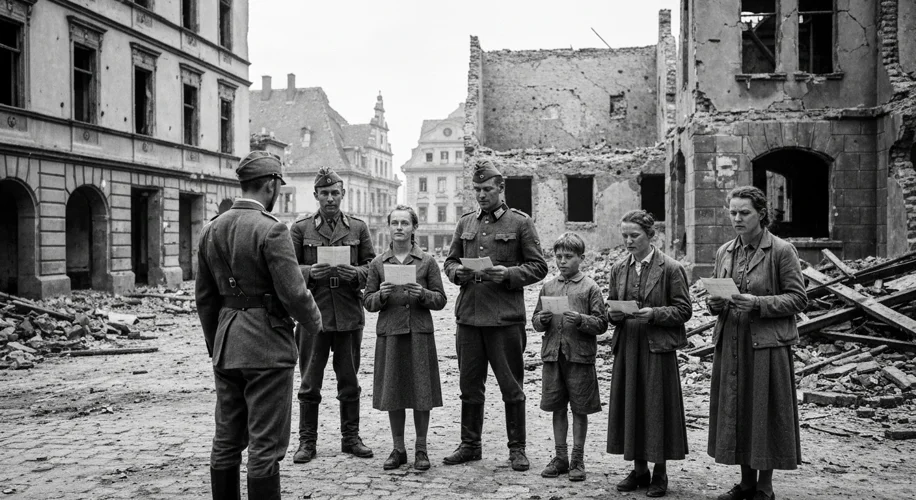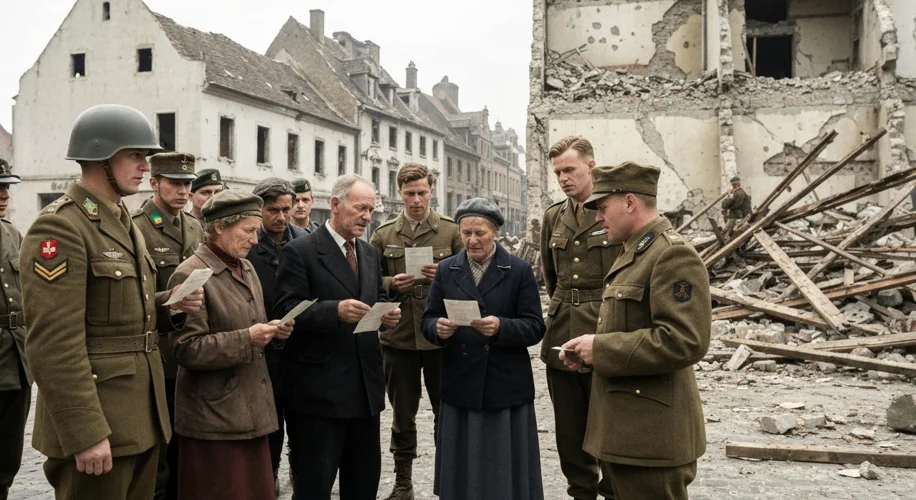The cacophony of war finally faded in May 1945, leaving behind a landscape scarred by ruins and a world reeling from the unfathomable horrors of the Nazi regime. Adolf Hitler was dead, his Thousand-Year Reich crumbling into dust. But what became of the millions who had fervently supported him, who had cheered his speeches, worn his uniform, and believed in his poisonous ideology? Their story is not one of a clean break, but a complex, often brutal, and deeply human saga of reckoning, evasion, and the persistent echoes of a dark past.
The immediate aftermath of Germany’s surrender was characterized by a sweeping policy of denazification. Spearheaded by the Allied powers – the United States, Great Britain, France, and the Soviet Union – this was an ambitious, perhaps even utopian, attempt to purge German society, culture, and politics of all Nazi influence. Imagine the scene: Allied soldiers, many still bearing the fresh wounds of battle, wading through the rubble of German cities, tasked with identifying and removing anyone tainted by their association with the National Socialist German Workers’ Party (NSDAP).
For ordinary citizens who had been members of the NSDAP, a party that had absorbed a staggering 8.5 million members by the war’s end, the reality was often a stark interrogation. Many were classified based on their level of involvement, ranging from nominal members to ardent enthusiasts and perpetrators of war crimes. The process involved questionnaires, interviews, and in some cases, public tribunals. Those deemed “major offenders” faced severe penalties, including imprisonment, confiscation of property, and a lifelong ban from public life.

However, the sheer scale of membership made a thorough cleansing nearly impossible. Many joined the party for career advancement or simply to conform to societal pressures. Denazification committees, often overwhelmed and understaffed, struggled to differentiate between true believers and those who simply went along. This led to a situation where many, including former SS officers and ideologues, managed to slip through the cracks, often by changing their identities or simply lying about their past.
The Nuremberg Trials stand as the most prominent and symbolic attempt to bring high-ranking Nazi officials and ideologues to justice. Figures like Hermann Göring, Rudolf Hess, and Albert Speer faced the international court, accused of war crimes, crimes against humanity, and conspiracy. These trials were monumental, laying the groundwork for international criminal law and broadcasting to the world the depravity of the regime. Yet, they were only the tip of the iceberg, addressing a fraction of the individuals responsible for the atrocities.
For countless lower-ranking party members and sympathizers, the process was less about grand trials and more about local administrative measures. People were dismissed from their jobs, denied professional licenses, and barred from voting. In many cases, the denazification process became a tool for personal vendettas or opportunistic denouncements, further complicating the already difficult task of achieving justice.
As the dust settled and the immediate post-war chaos subsided, many former Nazis sought to disappear. Some simply retreated into private life, carrying their ideologies silently. Others, particularly those with skills deemed valuable by the burgeoning Cold War powers, found new opportunities. The United States, for instance, famously recruited German scientists and engineers, including some with questionable Nazi pasts, through programs like Operation Paperclip. These individuals were instrumental in the US space and missile programs, a stark example of pragmatic geopolitical interests overriding immediate justice.
Emigration also became a route for escape. Argentina, in particular, became a haven for many former Nazis, including notorious figures like Adolf Eichmann, who lived in relative anonymity for years before being captured and brought to Israel for trial. This post-war exodus highlights the transnational nature of the Nazi network and the challenges faced by international authorities in tracking down all those responsible.
What became of the ideology itself? While the Nazi Party was formally dissolved, the underlying currents of antisemitism, racial hatred, and authoritarianism did not simply vanish. In the years following the war, small neo-Nazi groups emerged, struggling to gain traction in a Germany eager to distance itself from its past. However, the memory of the Third Reich continued to cast a long shadow, occasionally resurfacing in fringe political movements and acts of far-right extremism.
The fate of Hitler’s supporters was a mosaic of justice, evasion, and adaptation. While many faced consequences, the sheer scale of the movement and the shifting geopolitical landscape meant that not everyone was held accountable. The denazification process, though a necessary step, proved imperfect, leaving behind questions about collective guilt and the enduring nature of extremist ideologies. The legacy of this period continues to inform our understanding of how societies grapple with the aftermath of totalitarianism and the complex paths toward reconciliation and remembrance.
Tags: [Denazification, Nuremberg Trials, Post-War Germany, Nazi Legacy]
Categories: [World War II, European History, Political History]
Seo_title: What happened to Hitler’s supporters after WWII? Denazification, trials, and evasion.
Seo_focus_keyphrase: what happened to Hitler’s supporters after he fell from power
Seo_meta_description: Explore the complex fate of Nazi Party members and sympathizers after Hitler’s defeat, from denazification and trials to emigration and the lingering influence of Nazi ideology.

